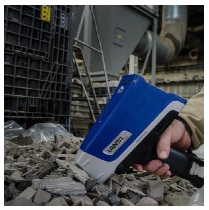What is a catalytic converter?
The catalytic converter is a car part that aims to convert the toxic gases and pollutants contained in the exhaust gases of an internal combustion engine into less harmful pollutants. To do this, it catalyzes an oxidation-reduction chemical reaction..jpg)
The converter was developed in the 1960’s to meet stringent new emission legislation, initially in America, followed by the rest of the world. Since 1975 all vehicle manufacturers have used catalytic converters, and other emission control devices, to meet the required reduced emission levels.
In addition, more and more diesel catalysts are coupled to a particulate filter (DPF) to remove more visible particles that are not converted by the catalyst.
How does the catalytic converter work?
Under intense heat (426°C / 798,8°F minimum), it transforms the dangerous gases (carbon monoxide to dioxide) emitted by the exhaust system into carbon dioxide and water. It also converts nitrogen oxide to its original state of nitrogen and oxygen. The catalyst removes almost all the toxic gases. In normal operation, less than 1% remains. It has a capacity of one to two liters.
What about the precious metal inside?
In a catalytic converter, the catalyst is coated on the ceramic body. Its "honeycomb" structure (monolyth) is formed by small square-section channels which inside, microscopic particles of precious metals (rhodium, platinum and palladium) are found. The quantities and the value of the precious metals can vary from one catalyst to another, which is why it is necessary to analyze them to know their value. Thus, Ecotrade Group offers XRF analysis, decaning and refining of all models of catalytic converters and diesel particulate filters.
Related Questions
- What is a catalytic converter?
- What is the catalyst of a catalytic converter?
- What is the difference between “oxidation” and “three-ways’ converters?
- Can a bad catalytic converter cause a car to overheat? what causes a converter to become red hot?
- What causes a catalytic converter to become clogged?
Still need help ?
Contact our 24/7 support.

























